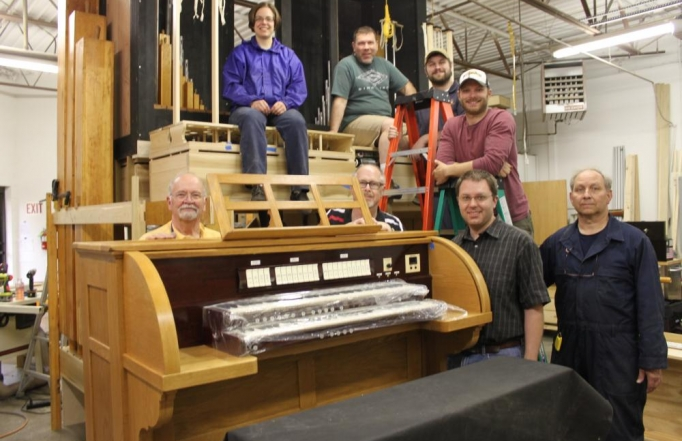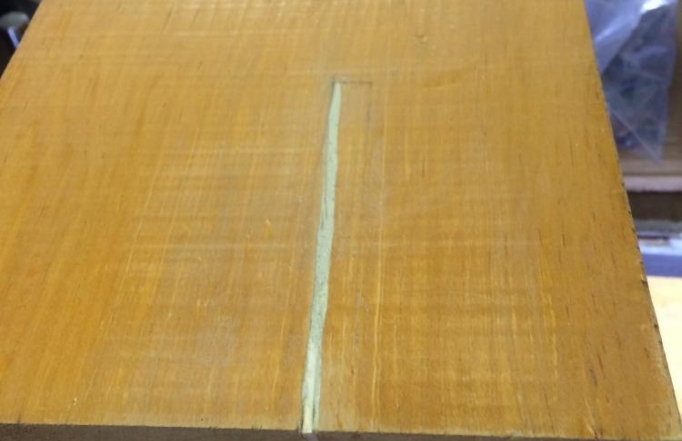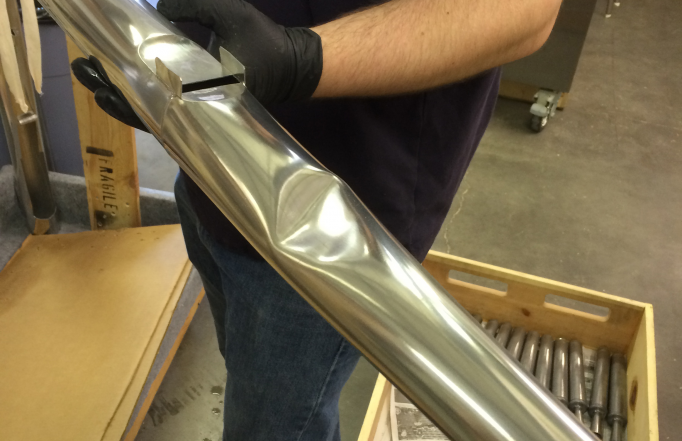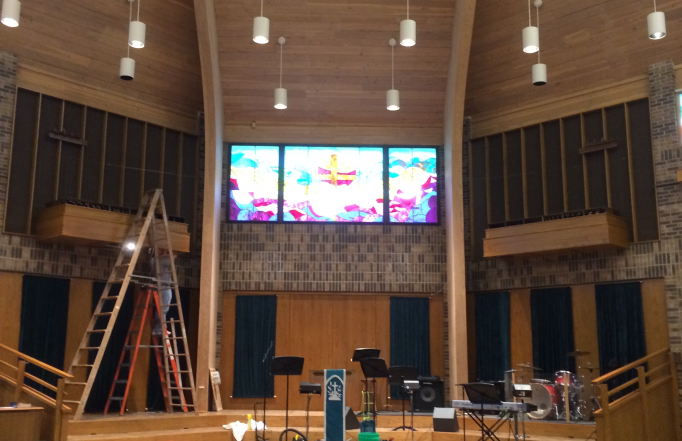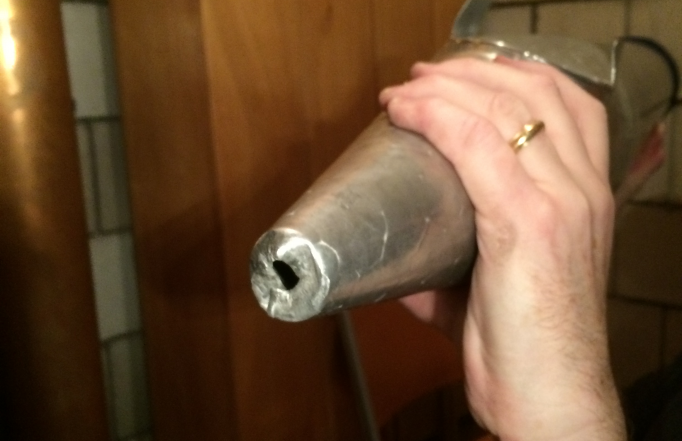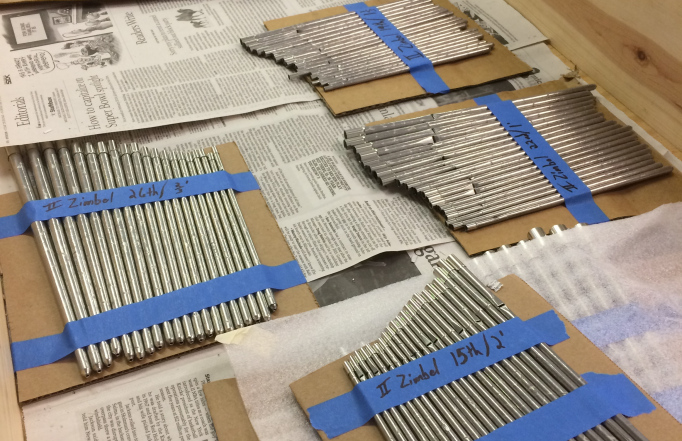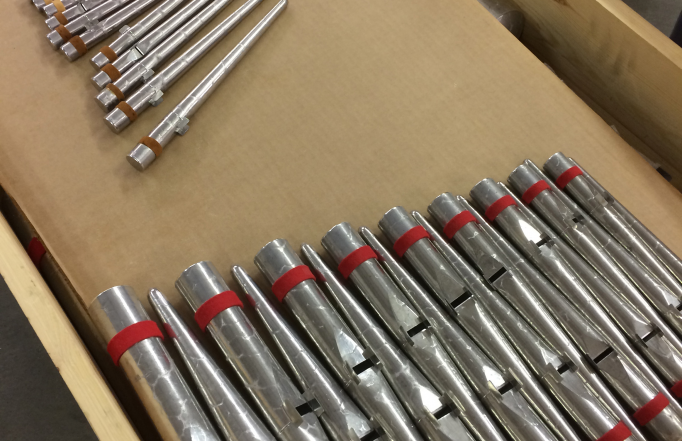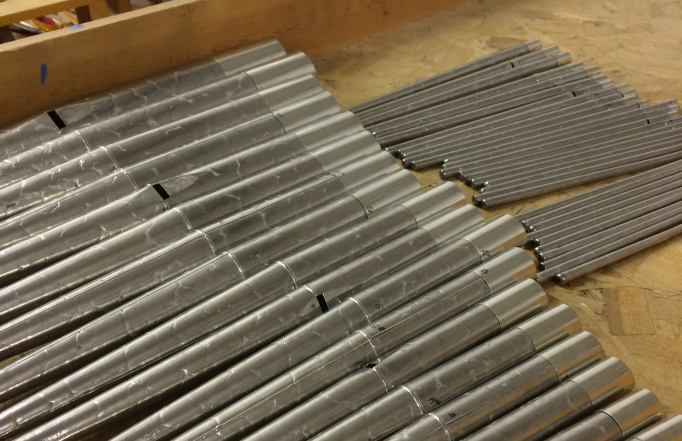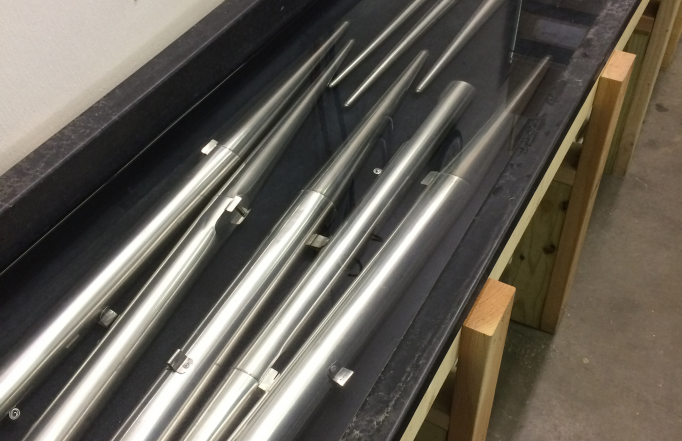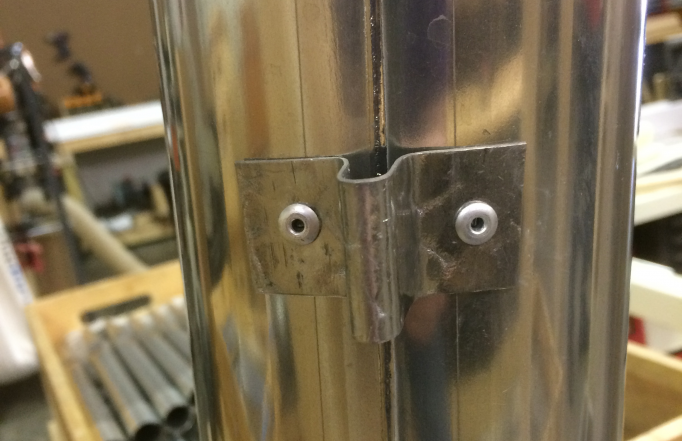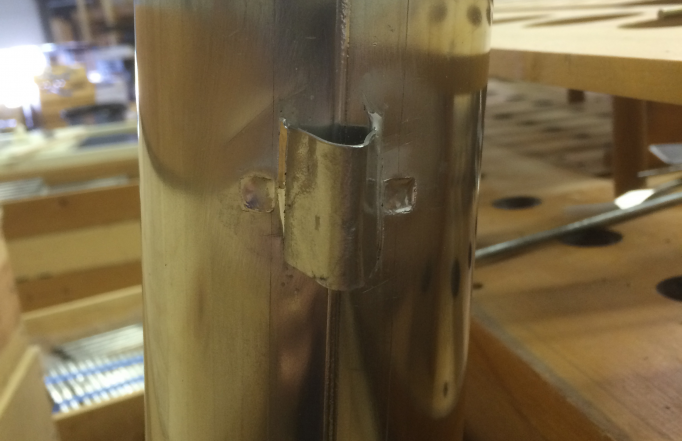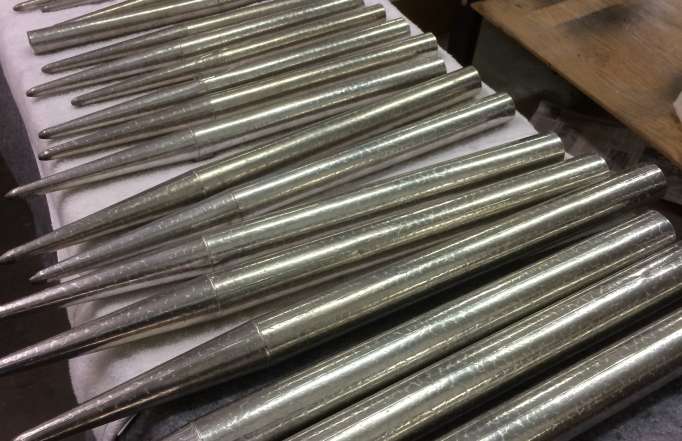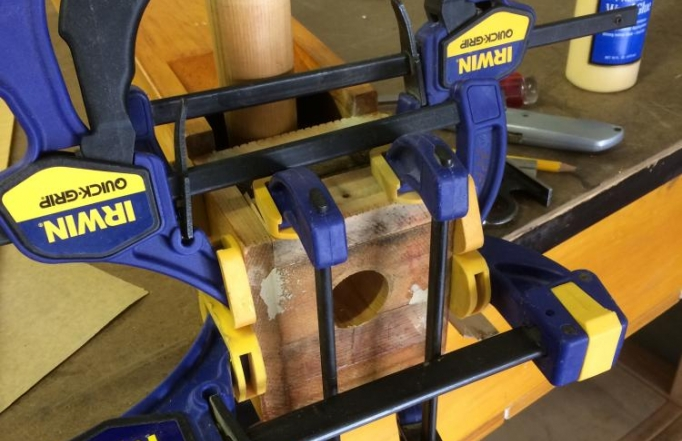From left to right, starting on the organ wind chest, are Laura Potratz, Andrew Fredel, Zach Clasen and Eric Hobbs. Standing are Lynn Thorson, David Engen, David Grandall and Paul Clasen.
Oops. We had an accident in the shop when this facade pipe with a long foot fell to the floor, encountering a sharp edge on the way. Our pipe maker in Missouri took the foot off, repaired the dent, and soldered it all back together. It is back in the facade now. Only if you know which pipe this was can you see that it is just a tiny bit shorter than its neighbors!
Organ pipes are made of an alloy of tin and lead, which is heavy and soft. Over time the weight of the pipe can collapse the toe, as shown here. This toe has collapsed and closed off the air supply, which would soften the pipe. This pipe needs a new toe to correct the problem and ensure it does not happen again. Unfortunately, the client decided to sell the organ rather than make repairs.
New pipes of a 2-rank Zimbel, prior to installation. The original pipes were much fatter and produced a dull, flute-like sound which is not appropriate. This type of stop should produce a bright "tinkle", which these pipes have done.
Some pipes on the shop voicing machine. The voicing process ensures the pipes speak the proper tone and volume and pitch, and speak promptly.
These pipes are part of a Gedeckt stop -- pipes with caps. The red felt ensures the caps are tight while being movable for tuning.
Small pipes that have been "re-scaled". The originals were quite thin and did not produce the proper tone to achieve a good blend. By cutting the pipes off we made them fatter and gave them the tone they needed.
We have a long cattle trough in the shop for washing pipes. We soak the tin/lead pipes in a water solution with Versene added. The Versene cleans off years of tarnish and in many cases makes the pipes shine like new.
Many pipes need hooks to hold them up. This is part of a facade, and all pipes had hooks. The rivets don't work very well on tin/lead pipes unless they are also soldered, which is what we had to do. This picture shows the hook before it was soldered in place. (One of these pipes nearly fell out of the facade to the floor when an unsoldered rivet came loose!)
After soldering, the hook is secure and the holes created by the rivets are filled in, ensuring the pipe also speaks properly.
After the bath and after a good rinse and dry, these pipes are air-drying, looking as shiny as the day they were made several decades ago.
From left to right, starting on the organ wind chest, are Laura Potratz, Andrew Fredel, Zach Clasen and Eric Hobbs. Standing are Lynn Thorson, David Engen, David Grandall and Paul Clasen.
Oops. We had an accident in the shop when this facade pipe with a long foot fell to the floor, encountering a sharp edge on the way. Our pipe maker in Missouri took the foot off, repaired the dent, and soldered it all back together. It is back in the facade now. Only if you know which pipe this was can you see that it is just a tiny bit shorter than its neighbors!
Organ pipes are made of an alloy of tin and lead, which is heavy and soft. Over time the weight of the pipe can collapse the toe, as shown here. This toe has collapsed and closed off the air supply, which would soften the pipe. This pipe needs a new toe to correct the problem and ensure it does not happen again. Unfortunately, the client decided to sell the organ rather than make repairs.
New pipes of a 2-rank Zimbel, prior to installation. The original pipes were much fatter and produced a dull, flute-like sound which is not appropriate. This type of stop should produce a bright "tinkle", which these pipes have done.
Some pipes on the shop voicing machine. The voicing process ensures the pipes speak the proper tone and volume and pitch, and speak promptly.
These pipes are part of a Gedeckt stop -- pipes with caps. The red felt ensures the caps are tight while being movable for tuning.
Small pipes that have been "re-scaled". The originals were quite thin and did not produce the proper tone to achieve a good blend. By cutting the pipes off we made them fatter and gave them the tone they needed.
We have a long cattle trough in the shop for washing pipes. We soak the tin/lead pipes in a water solution with Versene added. The Versene cleans off years of tarnish and in many cases makes the pipes shine like new.
Many pipes need hooks to hold them up. This is part of a facade, and all pipes had hooks. The rivets don't work very well on tin/lead pipes unless they are also soldered, which is what we had to do. This picture shows the hook before it was soldered in place. (One of these pipes nearly fell out of the facade to the floor when an unsoldered rivet came loose!)
After soldering, the hook is secure and the holes created by the rivets are filled in, ensuring the pipe also speaks properly.
After the bath and after a good rinse and dry, these pipes are air-drying, looking as shiny as the day they were made several decades ago.
The Workshop
Many times the work needs to be done in a wood shop rather than in the church. Our office and shop in Maple Grove is where we construct wind chests, repair and clean pipes, do wiring and voicing. Illustrated here is a selection of pictures taken in the shop.


